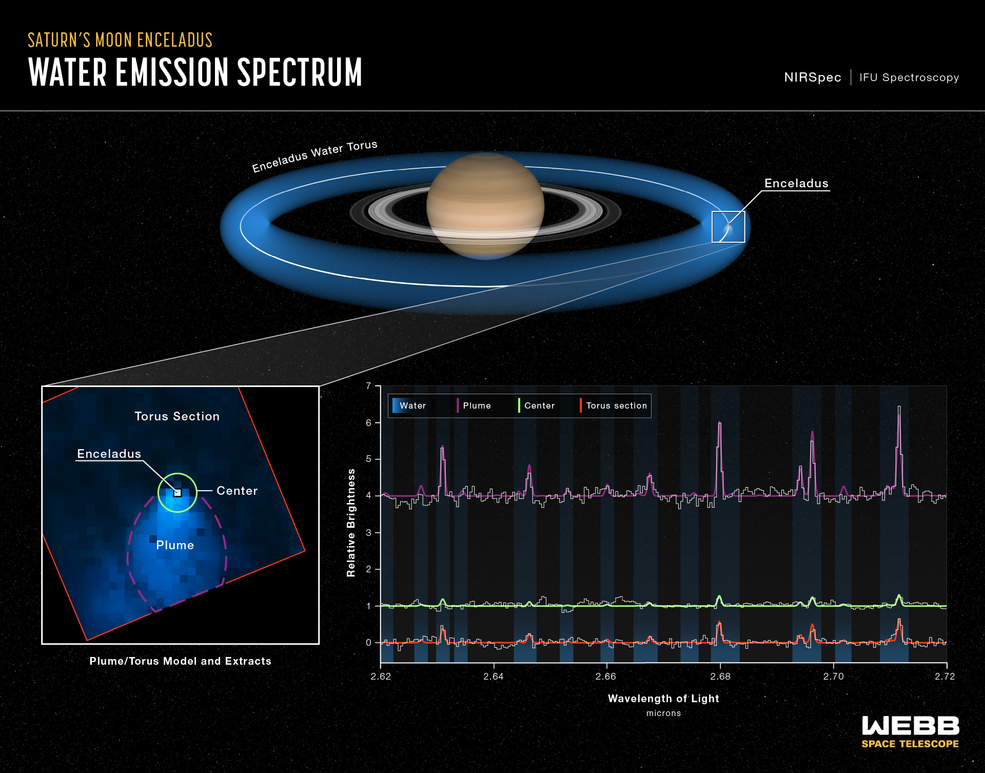Report by Swasti Sharma
A water vapour plume from Saturn’s moon Enceladus spanning more than 6,000 miles (9600 kilometres) has been detected by researchers using NASA’s James Webb Space Telescope (JWST). Such a water emission has been noticed for the first time. The size of the plume is 20 times the size of the moon. Additionally, JWST is giving the chance to the scientists to research on how this emission feeds the water supply for the entire system of Saturn and its rings.
Enceladus, an ocean world is about four percent the size of Earth.It is targeted in the search for life beyond Earth. Geyser-like volcanoes eject jets of ice particles, water vapor, and organic chemicals out of crevices (cracks) in the moon’s surface are called ‘tiger stripes’. The length of the plume was not the only characteristic that intrigued researchers but the rate at which the water vapours was gushing out, about 79 gallons per second (1 gallon = 3.7 litres), is also a surprising fact.
The NASA/ESA/ASI Cassini mission spent over a decade exploring the Saturnian system. It imaged the plumes of Enceladus for the first time and flew directly through them and sampled what they were made of. However Cassini’s position within the Saturnian system provided no insights into the moon. Webb’s unique view from the Sun-Earth Lagrange Point 2, 1.5 million kilometres from Earth, as well as the sensitivity of its Integral Field Unit aboard the NIRSpec (Near-Infrared Spectrograph) Instrument, is offering new context.
The Webb observations directly demonstrate how the moon’s water vapour plumes feed the torus, a frizzy doughnut of water that is located parallel to Saturn’s ring. By analysing the Webb data, astronomers have determined that roughly 30 percent of the water stays within this Torus, and the other 70 percent escapes to supply the rest of the Saturnian system with water.


